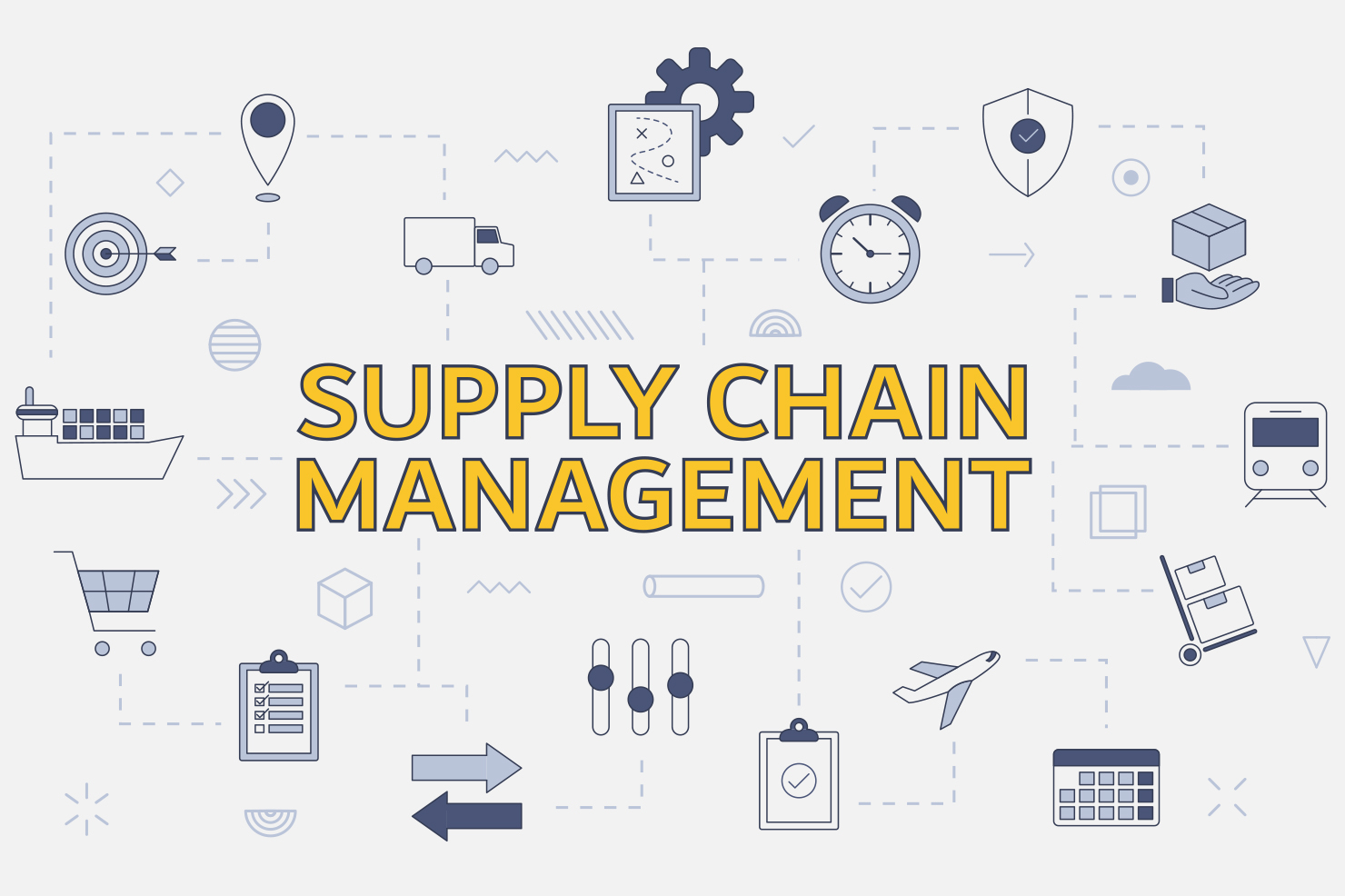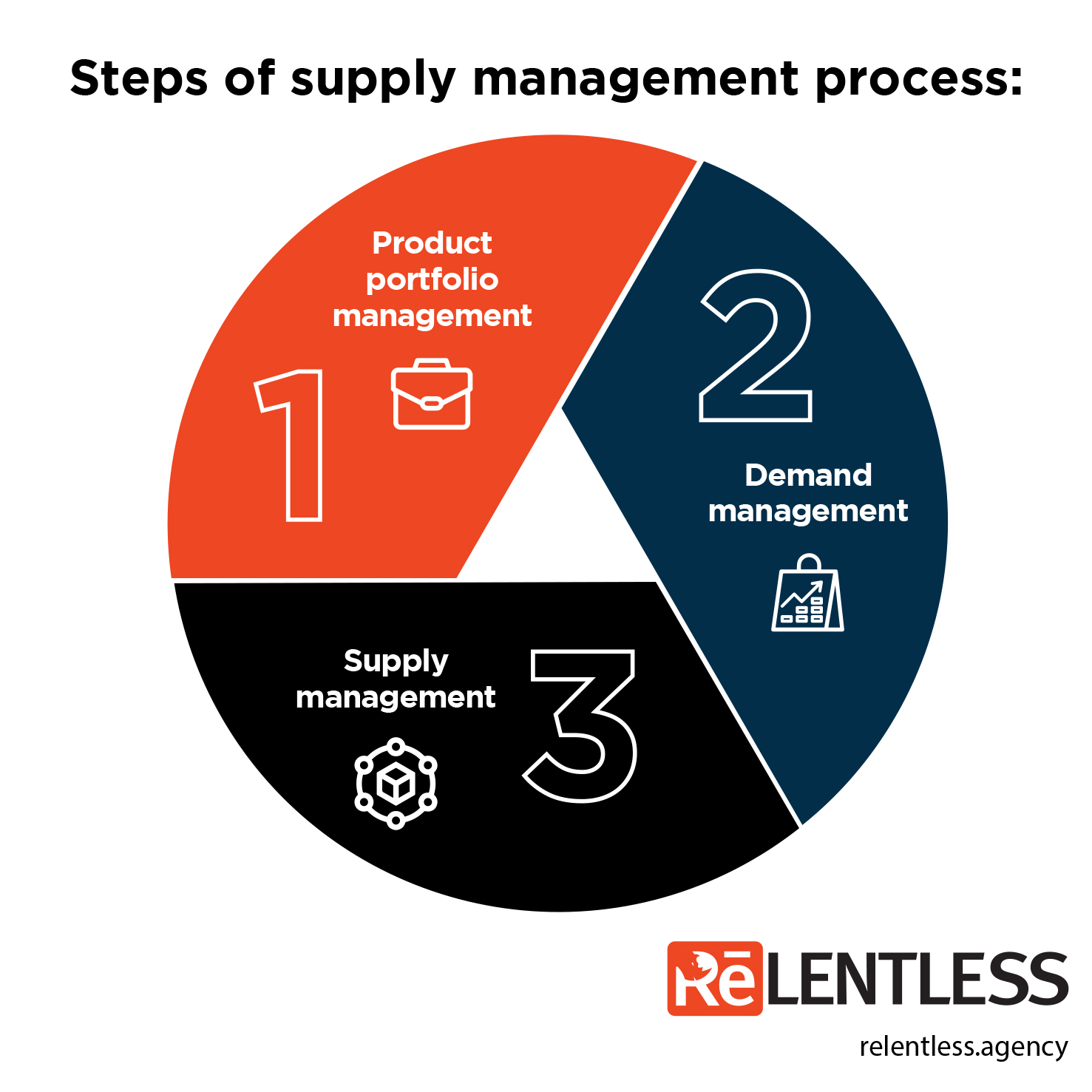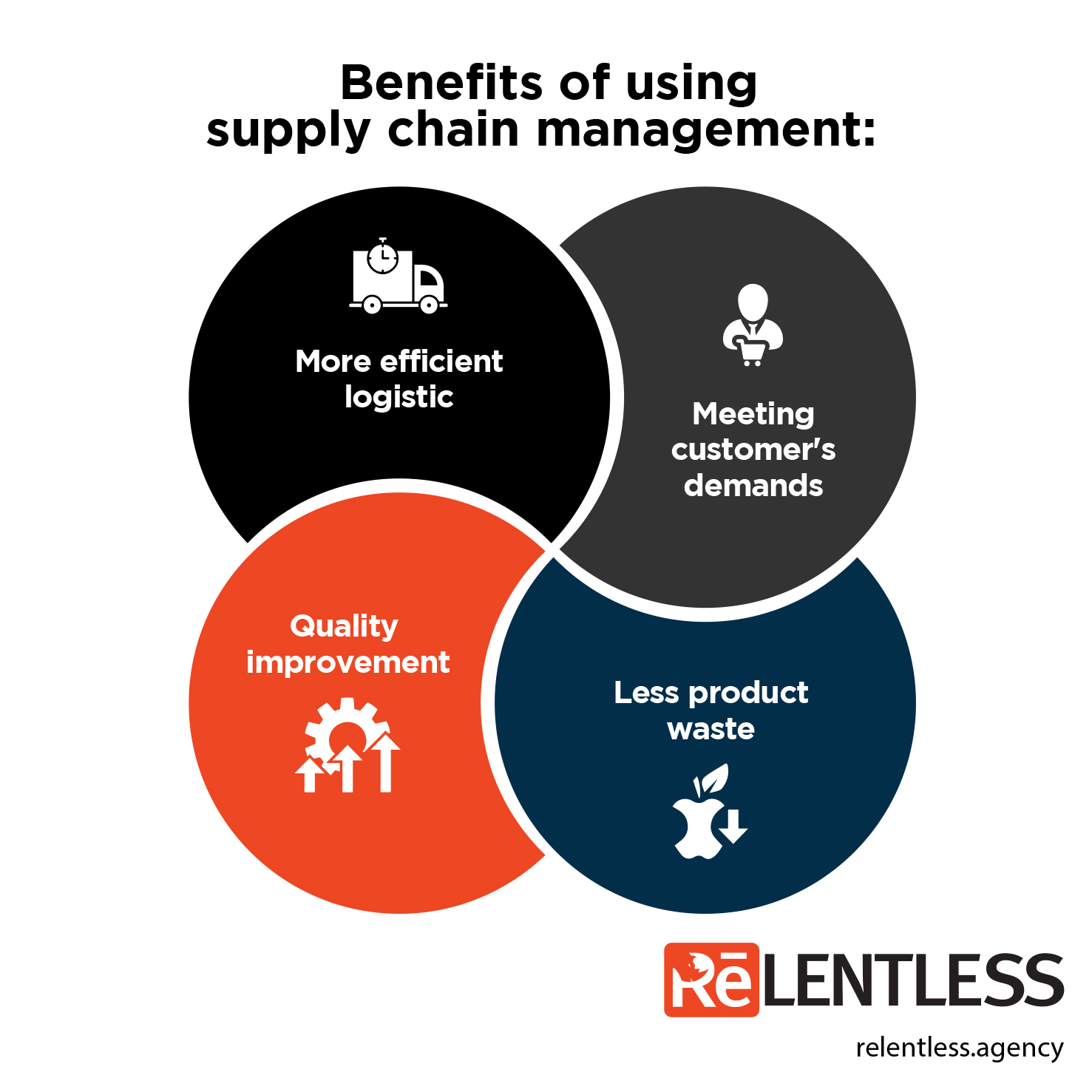Every business that includes a supply chain should have a precise and determined management of such a process. From materials to final products, every step influences the product quality and customer satisfaction levels. So if you want your business to grow, implementing a supply chain management (SCM) program can become the best thing that happens to your business.

This article will explain supply chain management and its benefits to your business organization, and its benefits.
What is Supply Chain?
In its simplest form, a supply chain stands for the process of delivering goods and services to consumers and customers. It starts with raw material shipment and warehouse storage, which is under the control of solid inbound logistics. Next, it includes manufacturing, storing finished products, and distributing goods to customers.
The supply chain includes all companies, parties, and individuals part of a product’s manufacturing process. In some cases, one company executes all aspects of the supply chain, but having multiple parties involved is familiar with the current market complexities.
Without the supply chain, the business will not only suffer excellent delays and shortcomings but probably won’t be able to function at all. Moreover, such problems could lead to a lack of customer satisfaction, resulting in loss of buyers and profit reduction.
The best way of handling the supply chain process is to form a supply chain management team. SCM will help you regain control over your product life cycles and optimize it to fit customers’ demands.
What is SCM?
Supply chain management is a strategic approach to optimizing the supply chain process to save resources and improve customer satisfaction.
It is a system created to control production, shipment, and product distribution. The goal is to cut unwanted expenses but keep the customers satisfied. That is why SCM has a lot of control over internal inventories and production, sales, distribution, and vendor relationships.
To rephrase, SCM oversees and manages the entire supply chain and logistic operations to minimize the cost and maximize efficiency.
Since it allows more control over product production and its ethics, the importance of SCM continues to grow. Companies are investing a lot of resources in keeping the production process as environmentally friendly as possible by reducing waste and improving working conditions.
How Does it Work?
The supply chain management process consists of several steps. All steps equally contribute to supply chain optimization and make production more efficient.

Product portfolio management
This step stands for creating a product, from the idea to the market introduction. The strategy implementation ensures a product will reach business goals and not lead to profit loss. It also provides brand and platform planning, marketing and commercialization planning, and portfolio management.
Demand management
This supply chain management process consists of making accurate demand assessments and predictions. It allows a business organization to align inventory capacities and levels with current peaking demands. It also provides a systematic approach to logistics management, buying, selling, and distribution. Trade promotions, which are also a part of this step, allow companies to increase the product demand by offering special pricing, demonstrations, and upgrades to retail stores.
Supply management
This step includes supply planning, balancing the supply levels and market demands, and production planning, which will provide enough materials to satisfy customers’ needs. Inventory, capacity, and distribution planning are essential parts of this step. These substeps should offer more control over the supply chain, minimizing errors and losses.
If you wonder what some of the best practices for supply chain management are, there are a few that proved highly effective.
It would be a good step to move from regular to real-time supply chain planning. Using an ERP system and spreadsheets, data analysis will provide information about the current product status. Based on the info provided, companies can conclude about future product traffic. They can also create scenarios to avoid inconveniences. When you prepare well, there are not many things that can undermine your product life.
Try to synchronize different parts of the supply chain into one solid plan that will result in real-time updates and forecasts. It will allow you to develop your planning process further and make it as efficient as possible.
Predicting customer demands proved one of the most valuable product life predictions. If you can conclude about the customer’s needs and demands, you will be able to adapt and perfect your product in the earliest stages of the production. Respecting customers’ demands can only help you grow your organization and expand the reach of your products.
And finally, try to be as flexible as possible. You will likely come across many holdbacks in the supply chain process. They occur primarily because different parties and companies are involved in the chain, so it is hard or impossible to keep control over all chain steps. There is always a possibility that a company that ships your products or distributes them to retail stores will make mistakes. That is why it is essential to try and predict these possible unpleasant outcomes and keep things as flexible as possible. That way, any occurring issues will be far easier to solve.
Benefits of using SCM
Several benefits using SCM brings to your business, and all other parties involved in your product’s life cycle are:

More efficient logistic
Implementing SCM helps you gain more control over your product’s production process, from the raw material phase to customer usage or returns. When your company has an insight into everything a product goes through, it will be much easier to make more efficient decisions and perfect the process further.
Meeting customers demands
It’s one of the essential benefits that have the most significant impact on the product market maintainability. If you ignore customer demands, the attention your product draws could fall back and leave your product in the depths of profit fall. But if you listen to your users and customers and try to upgrade the product, your efforts will be recognized and rewarded.
Quality improvement
SCM allows you to keep track of all of the steps your products go through before reaching the customer. If any measures do not follow regulations and standards, it will be easier to notice and understand which production steps are causing trouble using SCM. Once that is determined, it will be much easier to adapt the effort and improve the quality of the product.
Less product waste
Having control over the product lifecycle allows companies to minimize waste. In addition, reductions in this area could lead to more significant income savings, further directed to business expansion.
Current market demands made it clear that a product should always follow the needs and demands of users and consumers. As a result, companies use SCM as a valuable tool for monitoring the product lifecycle to keep their profits.
Talk to us! We can certainly help you with the best tools and training for you to start managing your supply chain.
